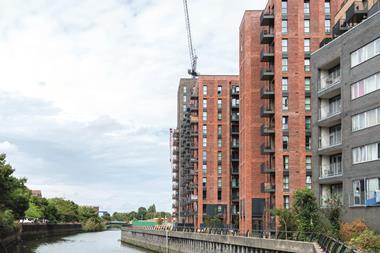Can you use a section 73 application to vary a planning consent when the changes to conditions you are seeking also entail a change to the description of development on the previous permission?

The answer, according to the Court of Appeal ruling in Finney v Welsh Ministers in November 2019, is no.
The applicant was granted permission for “installation of two wind turbines with a tip height of up to 100m”, according to the description of development. There was also a condition that the turbines be installed in accordance with a submitted drawing, which showed a 100m-high turbine.
The applicant sought to increase the turbines’ height to 125m via a section 73 application to substitute the previously submitted and approved plan. The council refused the application and the inspector allowed the applicant’s appeal.
In rejecting the appeal, the High Court followed the judgment in Wet Finishing Works 2017, which concluded that it was possible to use section 73 to vary a condition even if the condition conflicted with the description of the development itself. The question was merely whether there was a “fundamental alteration” to the original planning proposal and that was a matter of judgment for the decision-maker within the bounds of rationality.

But the Court of Appeal did not agree and has made it clear that if a developer wishes to amend a scheme in a way that requires a change to its description on the face of the planning permission, then an application under section 73 of the Town and Country Planning Act will not be appropriate.
A section 73 application can only be used to modify or remove planning conditions, not to alter the nature of the development that is permitted. The description may not be altered either explicitly or via a condition in a section 73 application.
This means the scope of section 73 is constrained by the description of the development, so no condition may be varied in a way that alters the scope of the original permission.
Developers are more likely to seek planning permission in broader terms to allow a degree of flexibility to make minor modifications, either to plans or other features of the development, so long as they are not inconsistent with the description of the development set out in the initial planning permission.
An over-prescriptive description of a development may inadvertently tie developers’ hands if amendments are needed later. An applicant wishing to amend a description will have to resort to a section 96A application, which is only available if the change is non-material in any event, or submit a new application to obtain permission for a different scheme.
Martha Grekos is a barrister and director at Martha Grekos Legal Consultancy






























No comments yet